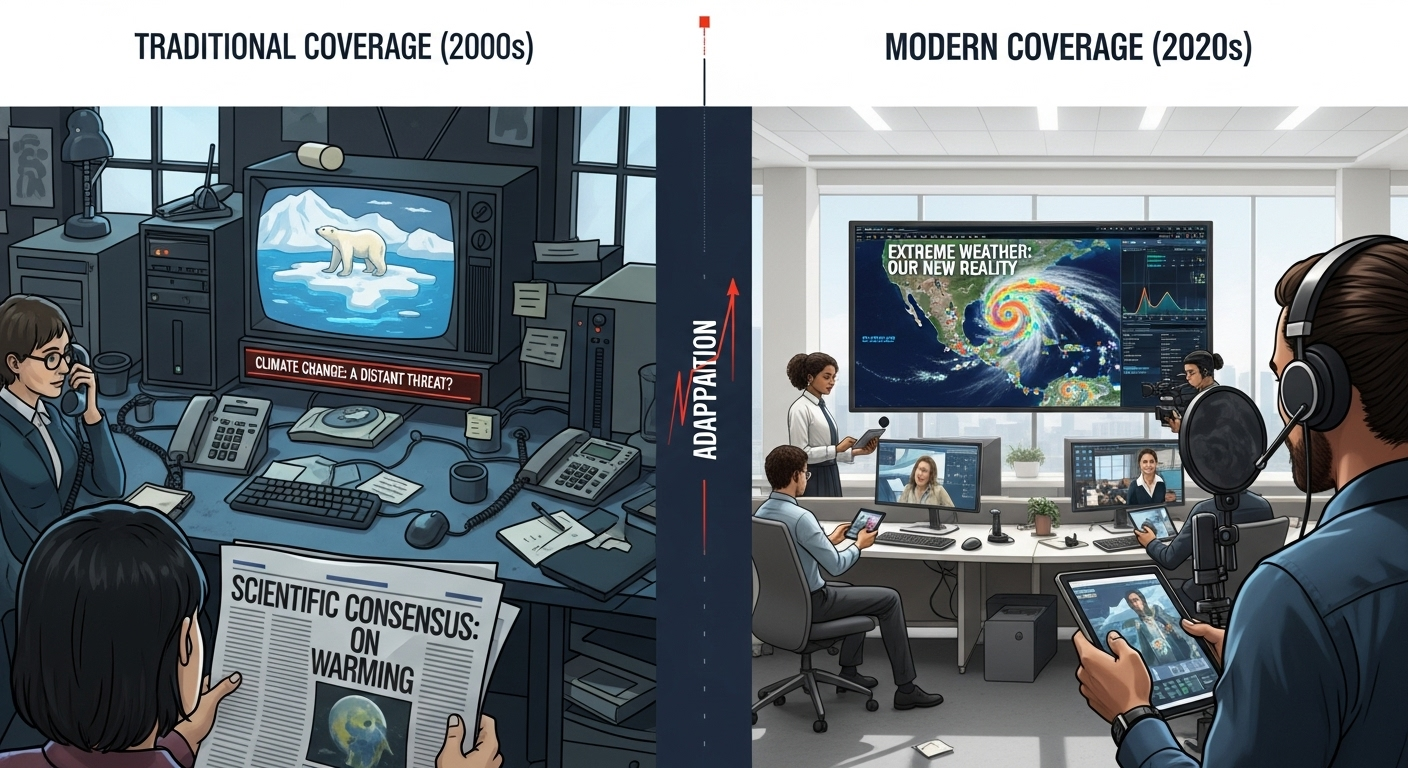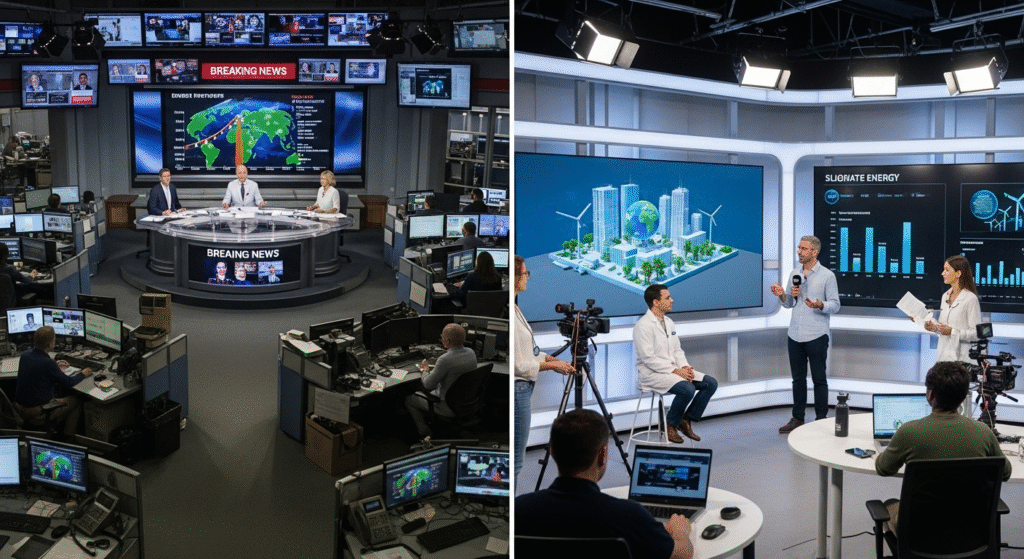So, climate change, huh? It’s the kind of topic that hangs over everything these days, like that persistent drizzle that just won’t quit. And let’s be honest, keeping up with the news about it can feel like drinking from a firehose. You’ve got melting glaciers, extreme weather events, policy debates… it’s a lot. But what’s really interesting – at least to me – is how news outlets themselves are grappling with this constant barrage of information and trying to deliver it to us in a way that’s both informative and, dare I say, engaging. It’s not just about reporting the facts; it’s about framing the narrative. And that’s where things get really tricky.
Think about it this way: climate change isn’t a breaking news story with a clear beginning, middle, and end. It’s an ongoing process, a slow-motion disaster (if you will). That makes it hard to cover in a way that holds people’s attention. I mean, how many times can you read about rising sea levels before you start tuning out? News outlets are acutely aware of this “doom and gloom” fatigue, which is why they’re experimenting with different approaches.
The Rise of Solutions Journalism

One of the biggest shifts I’ve noticed is the increasing focus on solutions journalism. Instead of just highlighting the problems – and trust me, there are plenty – more and more news organizations are dedicating resources to covering potential solutions. This can range from innovative technologies aimed at reducing carbon emissions to community-led initiatives focused on adapting to the impacts of climate change. It’s a crucial part of keeping people informed. The idea is to inspire hope and action, rather than just leaving people feeling overwhelmed and helpless. The frustrating thing is that some news outlets focus too much on the negative aspects, making it difficult to stay optimistic. Let me try to explain more clearly. What I mean is the media should emphasize the solutions as much as the problem.
But—and this is a big but—it’s crucial to avoid falling into the trap of greenwashing. Just because a company claims to be eco-friendly doesn’t necessarily mean it is. News outlets need to do their due diligence and hold these claims to account, investigating whether these companies’ policies align with their claims. This, to me, is a key part of responsible climate change coverage.
Data Journalism and Visual Storytelling
Another area where news outlets are really stepping up their game is in data journalism and visual storytelling. I’ve got to admit, this part fascinates me. We’re no longer confined to just text; we can use interactive maps, charts, and simulations to illustrate the complex dynamics of climate change in a way that’s both accessible and engaging. For example, a news organization might create an interactive map showing how rising sea levels are projected to impact coastal communities over the next few decades.
This kind of visual storytelling can be incredibly powerful, because it allows people to see the potential impacts of climate change in a tangible way. It makes the abstract feel concrete. And that, in turn, can motivate people to take action. Think about it this way: a picture is worth a thousand words, right? Well, an interactive data visualization is worth even more.
Localizing the Climate Change Narrative
Here’s the thing: climate change is a global problem, but its impacts are felt locally. And news outlets are increasingly recognizing the importance of localizing the climate change narrative. This means focusing on the specific ways that climate change is affecting communities in their region, whether it’s through increased flooding, more frequent wildfires, or changes in agricultural patterns. If you really want to take a trip down the rabbit hole, check out Wikipedia’s overview of the Effects of Climate Change.
By connecting climate change to people’s everyday lives, news outlets can make the issue feel more relevant and urgent. It’s one thing to read about melting glaciers in Antarctica; it’s another thing to see how climate change is impacting your own backyard. I’ve noticed some outlets doing a great job of this by profiling local residents who are already experiencing the impacts of climate change firsthand. These personal stories can be incredibly powerful in raising awareness and galvanizing support for climate action.
I initially thought that global news would be the most impactful, but it turns out local news is key.
The Challenge of Objectivity
Of course, covering climate change isn’t without its challenges. One of the biggest is the challenge of maintaining objectivity. Climate change is a highly politicized issue, and there’s a lot of misinformation and disinformation out there. News outlets need to be careful to avoid falling into the trap of false balance, which is the practice of giving equal weight to both sides of an issue, even when one side is based on pseudoscience or outright lies. This is where authoritative sources are key. The thing is, it’s not just about finding sources, but finding trustworthy ones.
It’s important to acknowledge that there’s a broad scientific consensus on climate change, and that the vast majority of climate scientists agree that it’s happening and that it’s caused by human activity. News outlets should be clear about this consensus and avoid giving undue platform to climate change deniers. That said, they also need to be fair and accurate in their reporting, and they need to avoid sensationalizing the issue or using alarmist language. It’s a delicate balancing act.
FAQ: Climate Change Coverage
Why is climate change coverage so important?
Because it’s arguably the biggest challenge facing humanity today! Accurate, comprehensive, and engaging coverage is crucial for informing the public, holding decision-makers accountable, and motivating action. Without it, we’re basically driving blind.
How do I know if my news source is providing trustworthy climate change coverage?
Look for news outlets that rely on peer-reviewed scientific research, consult with climate scientists, and avoid sensationalism or misinformation. Check their fact-checking policies and look for a commitment to accuracy and balance. Be wary of sources that consistently downplay or deny the reality of climate change.
What is “solutions journalism” in the context of climate change?
Solutions journalism focuses on reporting not just the problems associated with climate change, but also the potential solutions. It explores innovative technologies, community-led initiatives, and policy changes that are aimed at mitigating or adapting to the impacts of climate change. It’s about offering hope and inspiring action.
How are news outlets adapting to the crisis when covering climate change?
News outlets are adapting to the climate crisis by embracing solutions journalism, using data journalism and visual storytelling to convey complex information, localizing the narrative to connect with people on a personal level, and working to maintain objectivity in a highly politicized environment. They’re also experimenting with new formats and platforms to reach wider audiences. And now, they are also adapting to the way news is generated on AI.
Isn’t climate change coverage just “doom and gloom”?
It can feel that way sometimes, but it doesn’t have to be! While it’s important to report on the negative impacts of climate change, it’s equally important to highlight the positive developments and potential solutions. A balanced approach is key to keeping people informed and engaged without overwhelming them with despair.
Ultimately, the way news outlets cover climate change has a profound impact on public perception and action. By embracing innovative approaches and committing to responsible journalism, they can play a vital role in helping us navigate this crisis. Now more than ever, staying informed is vital. And who knows, maybe one day we’ll look back on this period and see it as a turning point – a time when we finally woke up and took the threat of climate change seriously. One can only hope, right?



